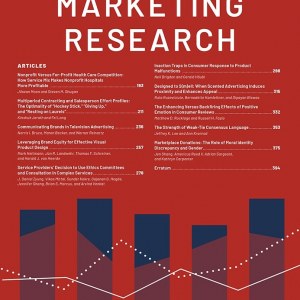
Donkers, B., \van Diepen\, M. and Franses, \.H. (2009). Dynamic and Competitive Effects of Direct Mailings: A Charitable Giving Application Journal of Marketing Research, 46(1):120--133.
-
Affiliated authors
-
Publication year2009
-
JournalJournal of Marketing Research
The authors propose a dynamic direct mailing response model with competitive effects. Purchase and promotion history are incorporated to map the dynamic competitive interactions among the firms sending the mailings. The authors investigate the impact of direct mailings on the revenues of each firm and its competitors over time. The model accounts for endogeneity of the mailing decision and for unobserved heterogeneity across households. The model is considered in a charitable giving setting, in which households often receive many direct mailings of different charities within a short period and competition is strong. The authors construct a unique database by merging the databases of three large charity organizations in the Netherlands. This results in householdlevel data on the direct mailings households received from and their donations to each of the three charities. The results show that a charity¿s own mailings are short-term substitutes; that is, an extra mailing cannibalizes the revenues of subsequent mailings. Furthermore, competitive charitable direct mailings tend to be short-term complements; that is, the direct mailings increase the total pie that is divided among the charities. In the long run, these effects die out. The results are also interpreted from a behavioral perspective.